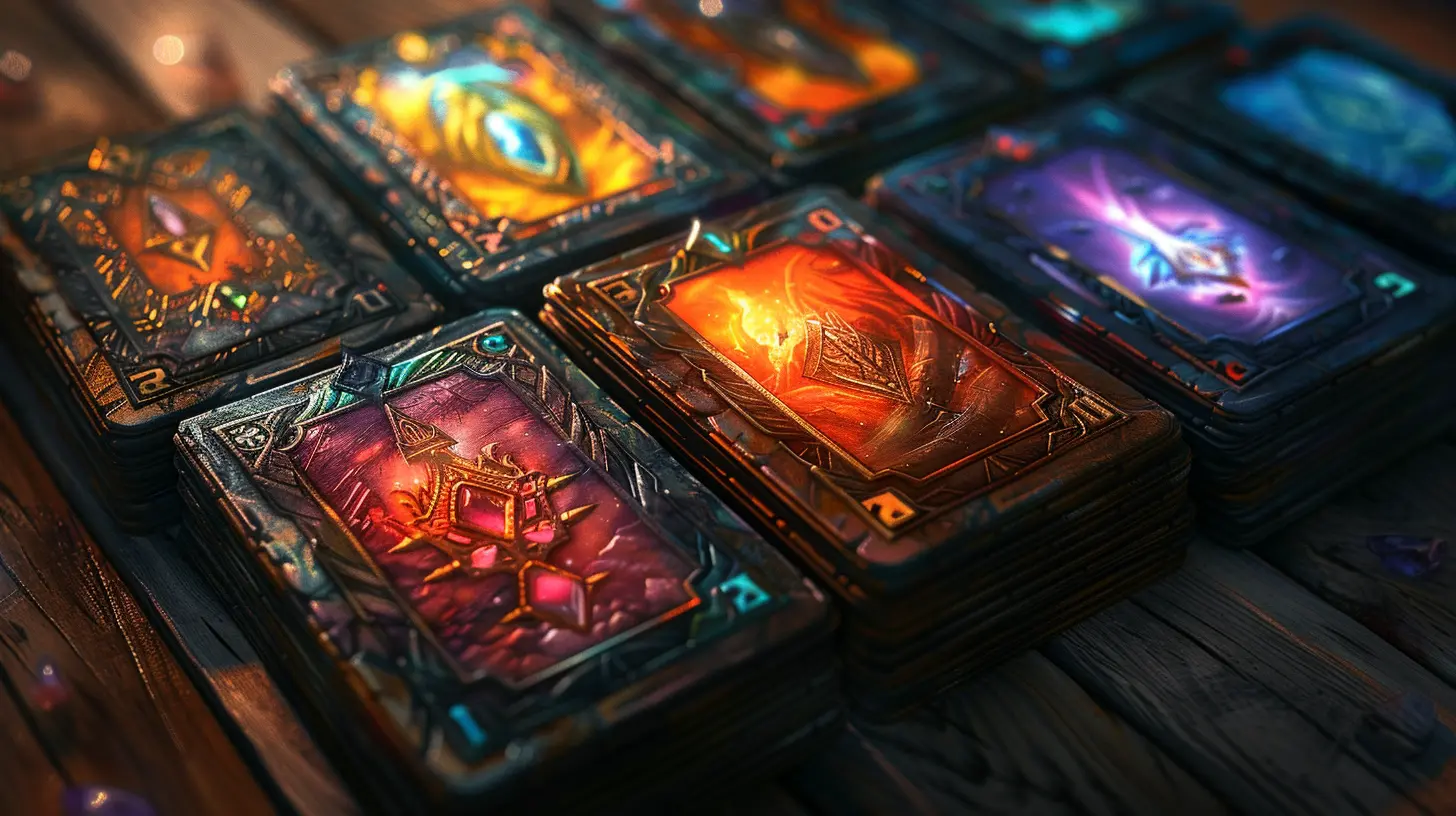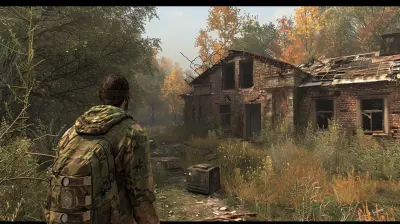Deck Customization for Victory: A Beginner's Guide
22 July 2025
So, you’ve stepped into the world of card games — whether it's Magic: The Gathering, Yu-Gi-Oh!, Hearthstone, or any other deck-based battler — and you're probably thinking, “How the heck do pros build these killer decks that crush me in like five turns?” Don't worry. You're not alone.
Deck customization can feel like trying to solve a Rubik’s Cube blindfolded. But once you get the hang of it, it becomes your secret weapon. This guide is built especially for beginners who want to start winning. We’re not just tossing random cards in and hoping for the best — we’re crafting weapons of strategic destruction.
Let's dive into the basics and then crank it up into the mindset of an actual deck-building mastermind.
What Is Deck Customization, Really?
Think of your deck like your battle armor. You wouldn’t walk onto a battlefield in pajamas, right? No way. You suit up. And your deck needs to be tailored for war.Deck customization is the art (yeah, art!) of building and modifying your deck to fit your playstyle, your strategy, and counter your opponents. It's not just throwing your favorite cards together – it's building something with purpose.
Step 1: Know Your Game (And Its Rules)
It might sound obvious, but you’d be shocked how many people dive into deck-building without really understanding the mechanics of the game.Whether you're playing Magic: The Gathering, Pokémon TCG, Legends of Runeterra, Gwent, or even a rogue indie card game, each has its own rules, card types, and meta (that’s short for ‘metagame,’ the current trends and strategies people use to win).
🚨 Pro Tip: Before building anything, spend time playing with the starter decks. Get a feel for how turns flow, how resources work, and what typical win conditions look like.
Step 2: Pick Your Playstyle
Here’s where it gets personal. Are you the aggressive type who likes to explode out of the gate? Or maybe you’re more of a strategic turtle, building up slowly for one massive, game-ending combo?Most games have several deck archetypes:
- Aggro (Aggressive) – Fast, low-cost cards. Win early.
- Control – Disrupts opponent’s plans. Wins late.
- Midrange – Balanced. Can adapt to most situations.
- Combo – Uses specific card combos to win in flashy ways.
- Tempo – Keeps pressure on while maintaining control.
🎯 Ask yourself: "How do I like to win?" Your answer will guide your entire build.
Step 3: Build Around a Core Strategy
Every strong deck has a backbone — a central idea or "win condition." That could mean overwhelming enemies with cheap creatures, locking them out of actions, or building up to summon an unstoppable beast.Let’s break it down:
1. Choose a core card or mechanic.- Example: In Magic, maybe you're focusing on lifegain. In Hearthstone, maybe you love Deathrattle synergies.
2. Support that strategy.
- Fill your deck with cards that fuel, protect, or enhance your core plan.
3. Cut the fluff.
- If a card doesn't help your theme or win condition, ditch it. Yes, even if it’s shiny and pretty.
🧠 Remember: Every card should have a job. Think of your deck like a well-oiled machine.
Step 4: Get the Right Ratio (Don’t Just Wing It)
Card ratios are like seasoning in cooking — too much or too little throws everything off.Here’s a rule-of-thumb breakdown (varies by game, of course):
- Land/Resource Cards: ~33-40% of your deck (if your game uses resources).
- Creatures/Units: ~30-40%
- Spells/Abilities/Tricks: ~20-30%
- Tech/Side/Utility Cards: ~10%
🔥 Hot Take: Beginners often get greedy and jam in too many high-cost, flashy cards. But without early-game plays, you’ll get steamrolled before you can play them.
Step 5: Test, Lose, Adjust, Repeat
Let’s be real — your first deck probably won’t smash tournaments. And that’s perfectly okay!Great decks aren’t born. They’re forged. Through fire. And failure.
- Play. A lot. Against everyone.
- Track your wins/losses. What went wrong? What popped off?
- Make micro-adjustments. Swap out underperformers. Try new tech.
Being flexible and open to change is crucial. Cards that looked great on paper might flop in practice.
💬 Not sure what to change? Ask other players! Forums, Discords, Reddit — card gaming communities are thriving and full of advice.
Step 6: Understand the Meta (But Don’t Be a Slave to It)
The meta is all about what decks are strong right now. It's shaped by trends, tournament results, and even new card releases.Keeping up with the meta helps you:
- Know what decks you’ll likely face.
- Add counters or “tech cards” to give you an edge.
- Avoid building decks that are totally outclassed.
But here’s the deal — don’t lose yourself chasing the meta. It shifts constantly. Build a deck you enjoy. If you’re having fun, you’ll naturally play more — and that’s how you improve.
Step 7: Master Your Deck (Pilot Like a Pro)
You can hand someone the keys to a Ferrari, but if they don't know how to drive, they're gonna crash.Building a killer deck is half the battle. The other half? Knowing how to play it.
Before you make any changes or jump ship:
- Play at least 20-30 games with your deck.
- Learn every trick, every combo, every mulligan (starting hand) decision.
- Understand when to play each card. Timing is everything.
💡 Insider Secret: Many "bad decks" are actually powerful but misunderstood. The more you master your own deck, the less you’ll blame luck and more you’ll rely on skill.
Bonus Tips for Deck-Building Brilliance
Still with me? Awesome. Let’s wrap things up with some juicy bonus wisdom:1. Use Deck-Building Tools & Simulators
Most major games have apps or online builders. These let you test ideas, share lists, and avoid pesky math.2. Study Other Decks (Then Make Them Yours)
Netdecking — copying popular decks — is fine for learning. But always add your twist or you'll never grow.3. Sideboards Are a Superpower
If your game allows sideboards (extra cards to swap in between games), use them. They let you counter specific threats without diluting your main deck.4. Know Your Budget
Legendary gold cards are cool, but you don’t need them all. Many top-level players win using budget decks made from common and uncommon cards.5. Track Your Changes
Keep a small deck journal or digital notes. When you swap cards, write down why. Over time, you’ll see patterns in your thinking — and improvements!The Mindset of a Victorious Deck Builder
Here’s a little secret sauce: building decks isn’t just about winning games. It’s about creativity, puzzle-solving, and self-expression.Your deck is a reflection of how you think and play. It’s your musical composition, your masterpiece in cardboard (or digital pixels).
Don’t be afraid to experiment. Break the rules sometimes. Innovate. That’s how the pros do it. That’s how metas are broken and legends are made.
So go on, shuffle up, draw that opening hand, and say it with me:
🎉 “My deck is BUILT for victory!”
Conclusion: Start Simple, Think Smart, Win Big
You don't need an expensive collection or years of experience to build winning decks. You just need the fundamentals, a little strategy, and a whole lot of heart.Remember:
- Learn the game.
- Match your deck to your playstyle.
- Stick to a strategy.
- Test, tweak, and improve.
- Put in the reps and know your deck inside and out.
There’s something undeniably satisfying about crafting a deck, stepping onto the battlefield, and watching your careful planning unfold into a glorious win.
Now go build something epic.
all images in this post were generated using AI tools
Category:
Card GamesAuthor:

Kaitlyn Pace
Discussion
rate this article
1 comments
Colette Parker
Great tips! Customizing decks really enhances gameplay strategy!
August 9, 2025 at 4:45 PM

Kaitlyn Pace
Thank you! I'm glad you found the tips helpful. Customizing your deck can truly elevate your game!


